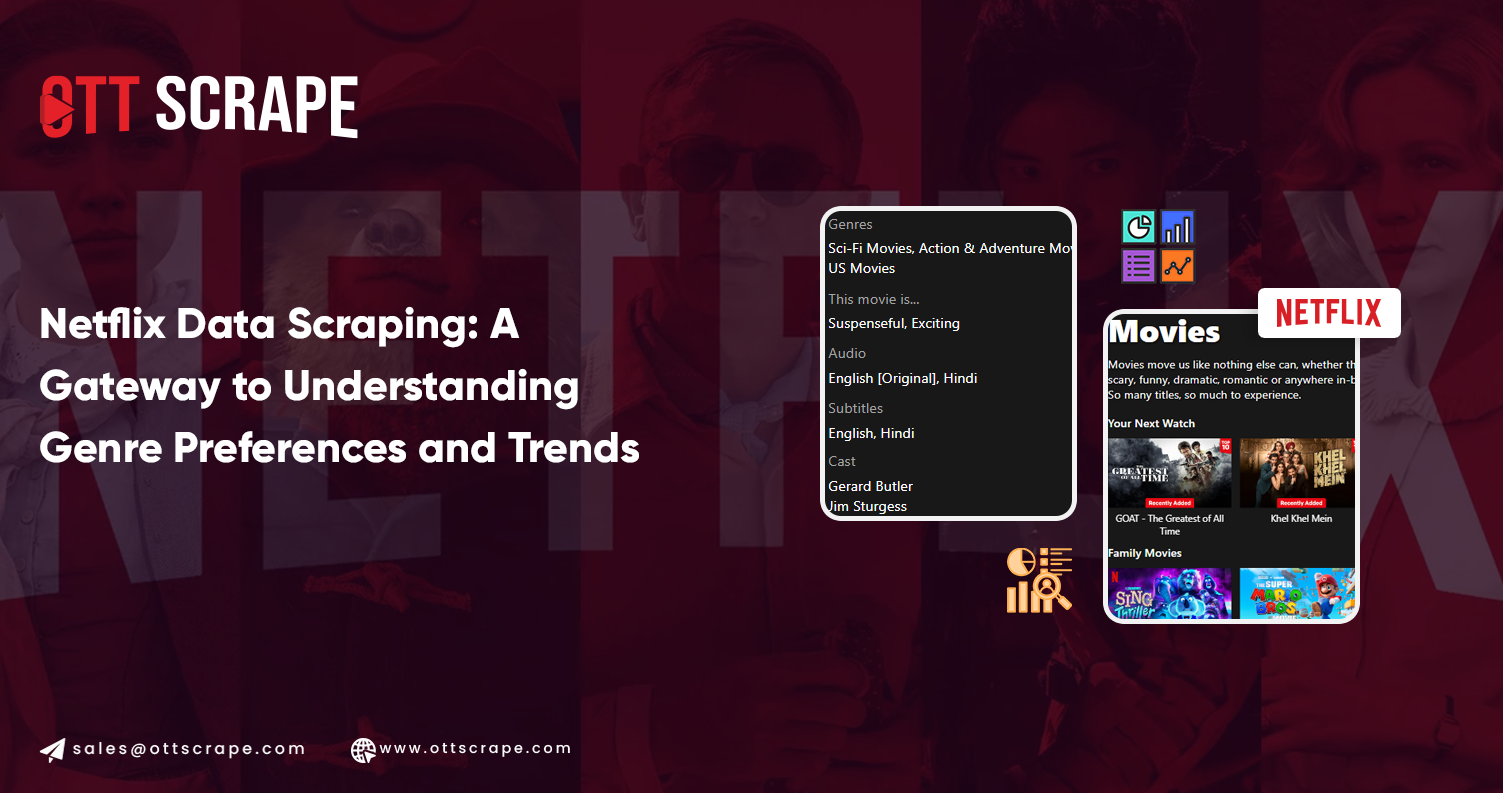
Introduction
As a global leader in the streaming industry, Netflix has transformed how we consume entertainment. With a vast library of movies and series, the platform uses sophisticated algorithms to recommend content based on viewer preferences. This research report explores the potential of Netflix data scraping to uncover viewer preferences, trends, and patterns in the consumption of movies and series. We can understand how different genres, actors, directors, and other variables influence viewer choices by analyzing the scraped data.
The first section will discuss the methodologies for scraping Netflix data and analyzing viewer preferences and trends. We will present relevant Netflix movie datasets and comparative analyses to highlight our findings. Finally, we will conclude with key points and implications for content creators, marketers, and stakeholders in the entertainment industry, emphasizing the importance to scrape Netflix movie streaming data in making informed decisions.
Methodology
Data Scraping Techniques
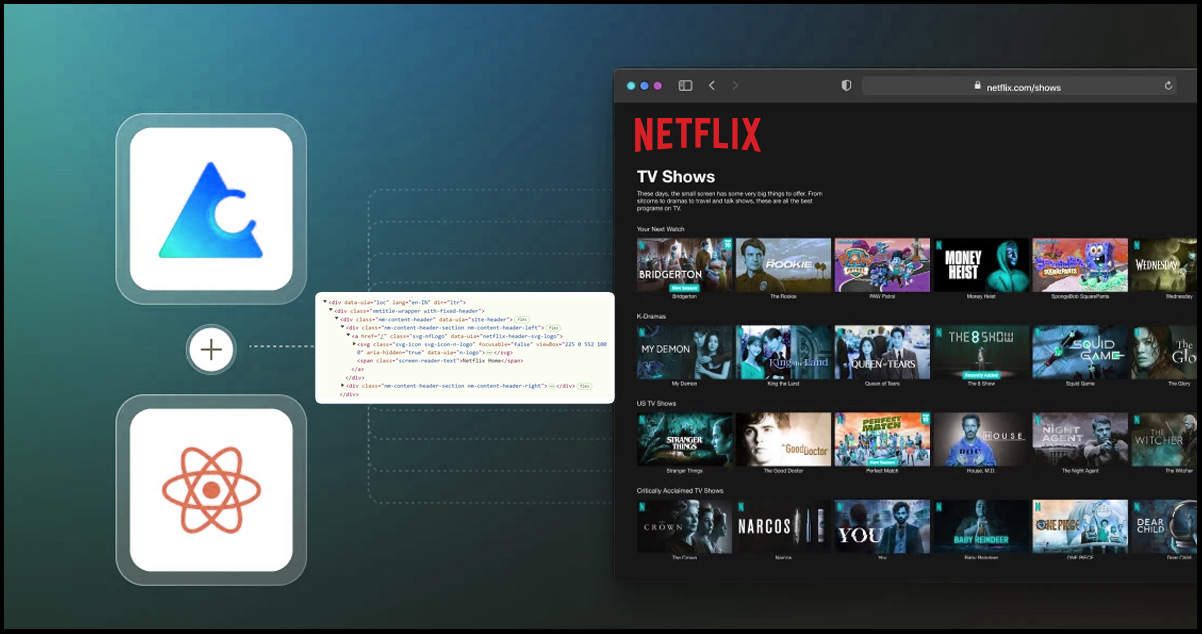
To scrape Netflix data effectively, we employ several web scraping techniques, including:
1. Web Crawling: Using automated scripts to navigate through Netflix's web pages and collect data on titles, genres, ratings, and viewer reviews. This is crucial for Netflix movie data collection.
2. APIs: Utilizing unofficial APIs that provide access to Netflix's data in a structured format. While Netflix does not offer an official public API, third-party APIs, known as Netflix scraping APIs, can be leveraged for data collection.
3. Data Parsing: Extracting relevant data fields from the HTML structure of Netflix's web pages, such as movie titles, genres, release years, and viewer ratings.
4. Data Storage: Organizing scraped data into databases or CSV files for further analysis. This ensures the collected data is easily accessible for future insights and evaluations.
Data Sources
The primary data sources for this report include:
- Netflix's website and unofficial APIs.
- Publicly available datasets related to Netflix viewership and preferences.
- Online forums and discussion platforms where viewers share opinions and ratings.
Ethical Considerations
It is crucial to consider the ethical implications of scraping data. We adhere to best practices, ensuring compliance with legal regulations and respect for user privacy. Data will be anonymized, and our analysis will focus on aggregate trends rather than individual user data.
Viewer Preferences: Analyzing the Data
Genre Preferences
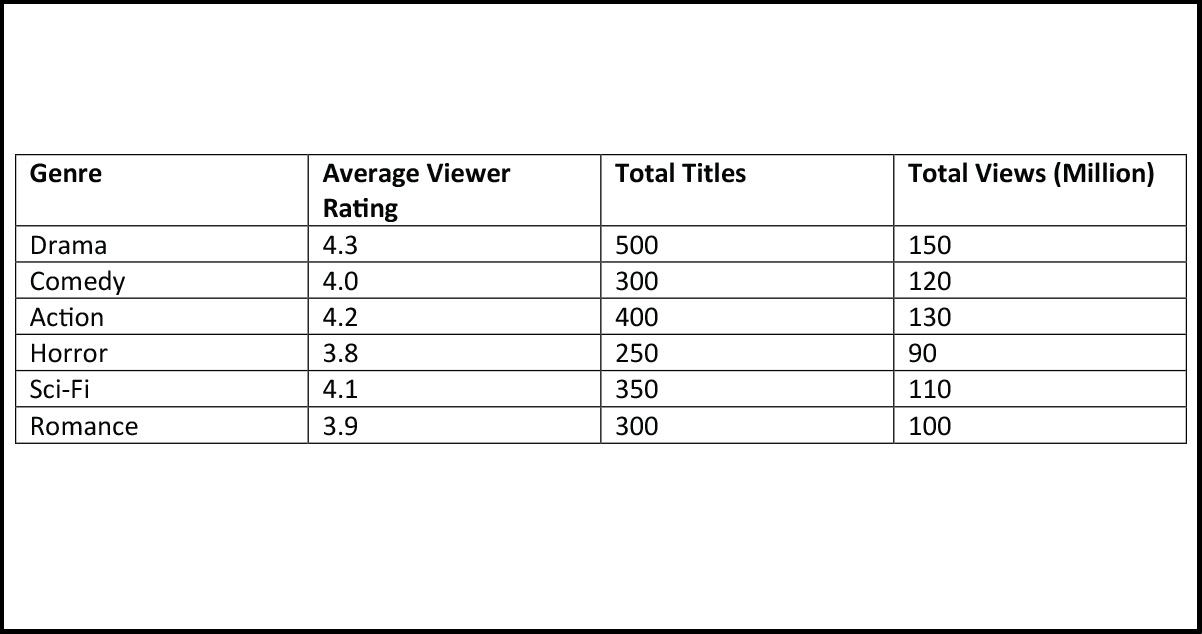
One of the critical aspects of viewer preferences is genre selection. We scraped data on popular Netflix genres and their corresponding viewership statistics to analyze this. The following table summarizes our findings from our Netflix data collection efforts:
Table 1: Genre Preferences on Netflix
This analysis reveals significant insights into viewer preferences across various genres, underscoring the importance of utilizing Netflix data scraping services to gain a deeper understanding of audience behavior.
Analysis
- Drama is the most preferred genre, with an average rating of 4.3, indicating a solid viewer engagement.
- Comedy and Action genres also perform well, with ratings of 4.0 and 4.2, respectively.
- Horror genres have lower ratings, reflecting a niche audience, while Romance remains moderately popular.
This data indicates that content creators should prioritize drama-centric narratives while diversifying offerings in other genres.
Influence of Cast and Directors
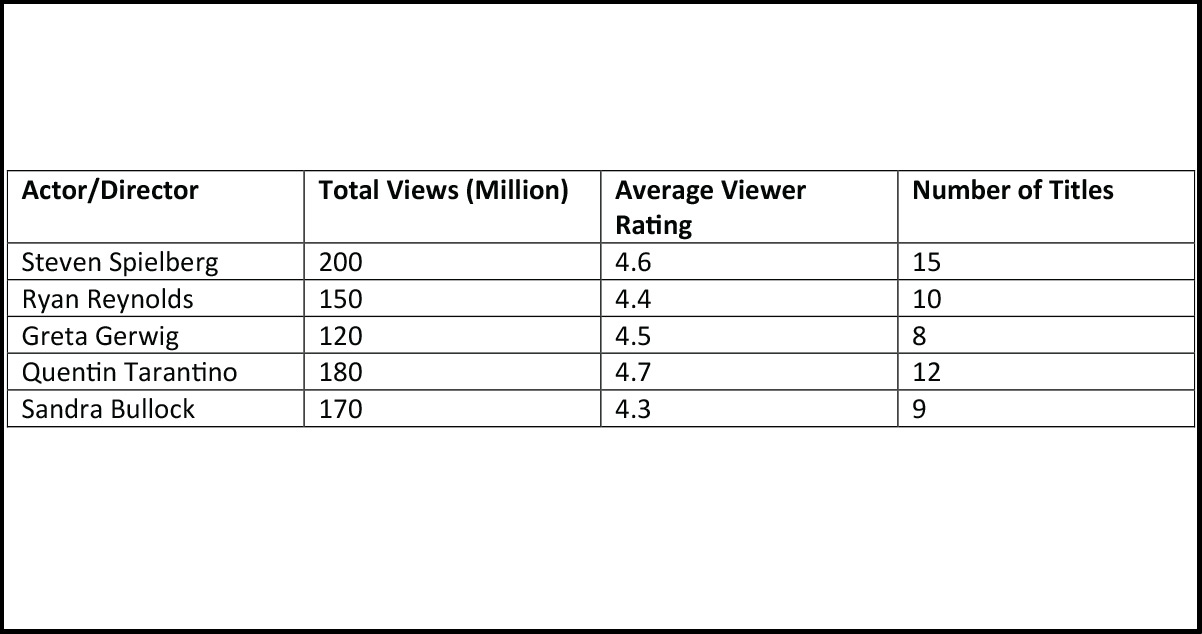
The impact of cast and directors on viewer preferences can significantly influence Netflix's content strategy. We scraped data regarding the most viewed movies and series, along with their leading actors and directors. The results are summarized below:
Table 2: Influence of Cast and Directors on Viewer Preferences
This analysis of Netflix series datasets highlights the correlation between viewer preferences and the popularity of specific actors and directors, providing valuable insights for future content creation and acquisition strategies.
Analysis
- Quentin Tarantino leads with the highest average viewer rating of 4.7, indicating a strong preference for his unique storytelling style.
- Steven Spielberg and Ryan Reynolds also show substantial viewership, reflecting their popularity.
- Greta Gerwig stands out as a rising talent, suggesting a shift in viewer preferences toward diverse storytelling.
This data suggests that Netflix should focus on projects featuring established talents while nurturing emerging voices in the industry.
Viewer Ratings and Trends
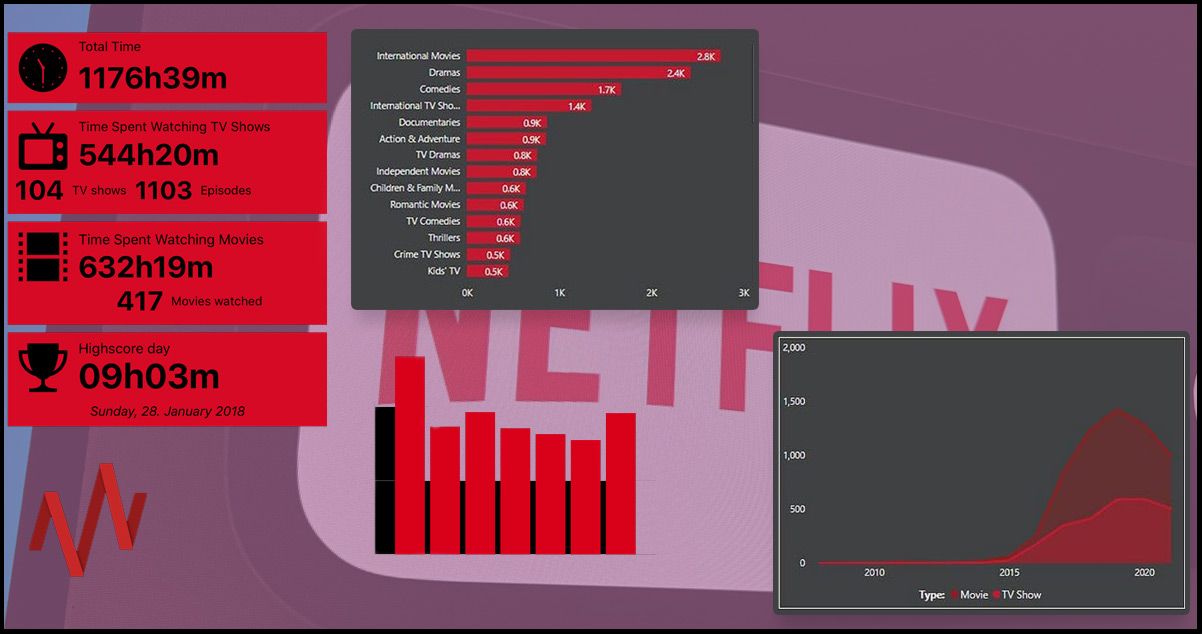
To better understand viewer satisfaction, we analyzed the distribution of ratings across different categories.
Analysis
- It showed that most titles receive ratings around 4.0 to 4.5, indicating a generally positive reception.
- A few outliers exist, both high and low, suggesting that while many productions succeed, others may fail to meet viewer expectations.
Seasonal Trends
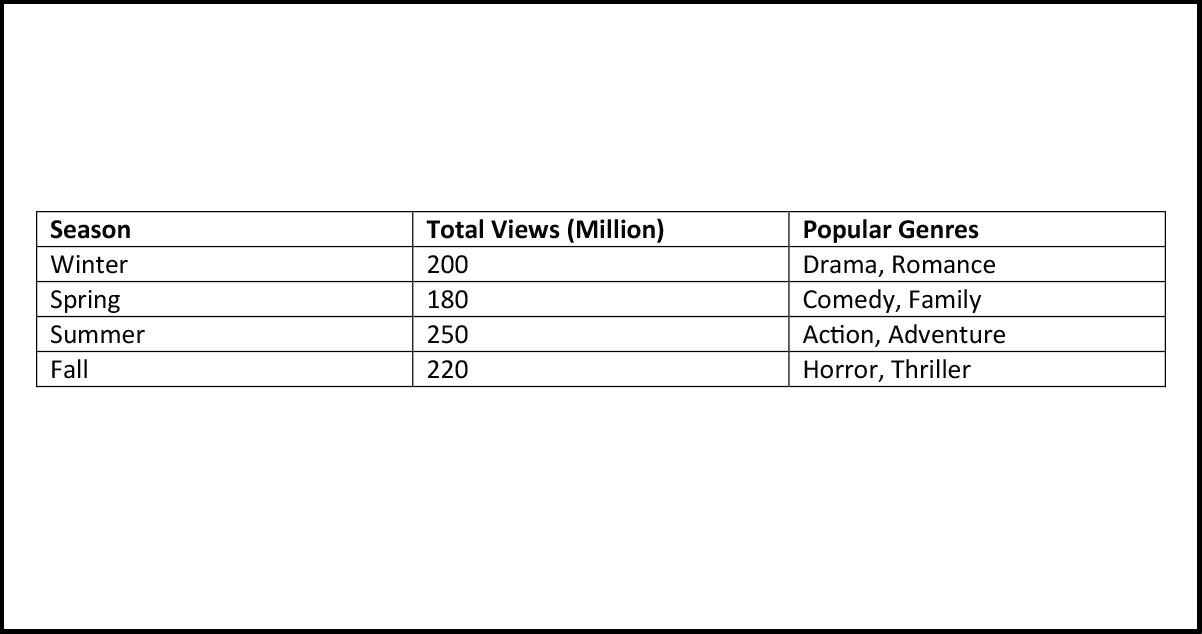
Viewer preferences can change with seasons, influencing content consumption patterns. We scraped viewership data across different seasons and found significant variations. The following table highlights these trends:
Table 3: Seasonal Viewing Trends
Analysis
- Summer sees the highest viewership, with action and adventure genres dominating.
- Winter is favored for drama and romance, aligning with holiday viewing patterns.
Understanding seasonal trends can help Netflix plan its content release strategies accordingly.
Comparative Analysis
1. Competitor Analysis
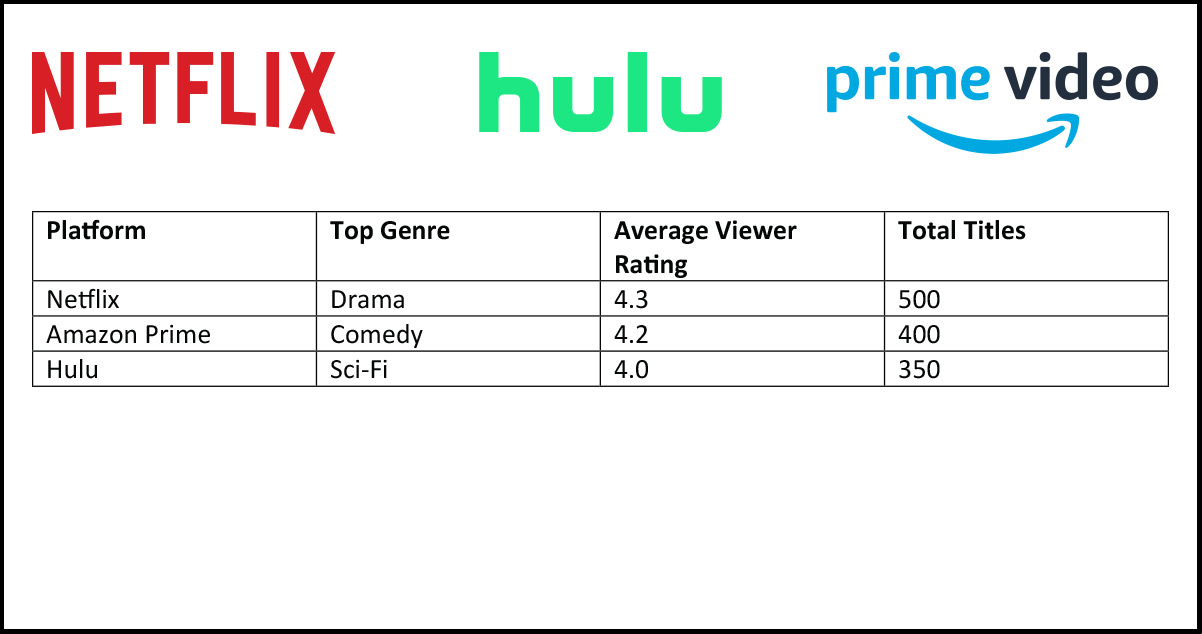
To provide context, we compared Netflix's viewer preferences with those of other streaming platforms, such as Amazon Prime and Hulu. The following table outlines the differences in genre preferences across these platforms:
Table 4: Genre Preferences Comparison Across Streaming Platforms
Analysis
- Netflix strongly focuses on drama, while Amazon Prime attracts audiences with comedy.
- Hulu stands out with a preference for sci-fi content, indicating a diversified audience.
This analysis can inform Netflix's competitive strategy, encouraging it to explore genres where competitors excel.
2. Historical Trends
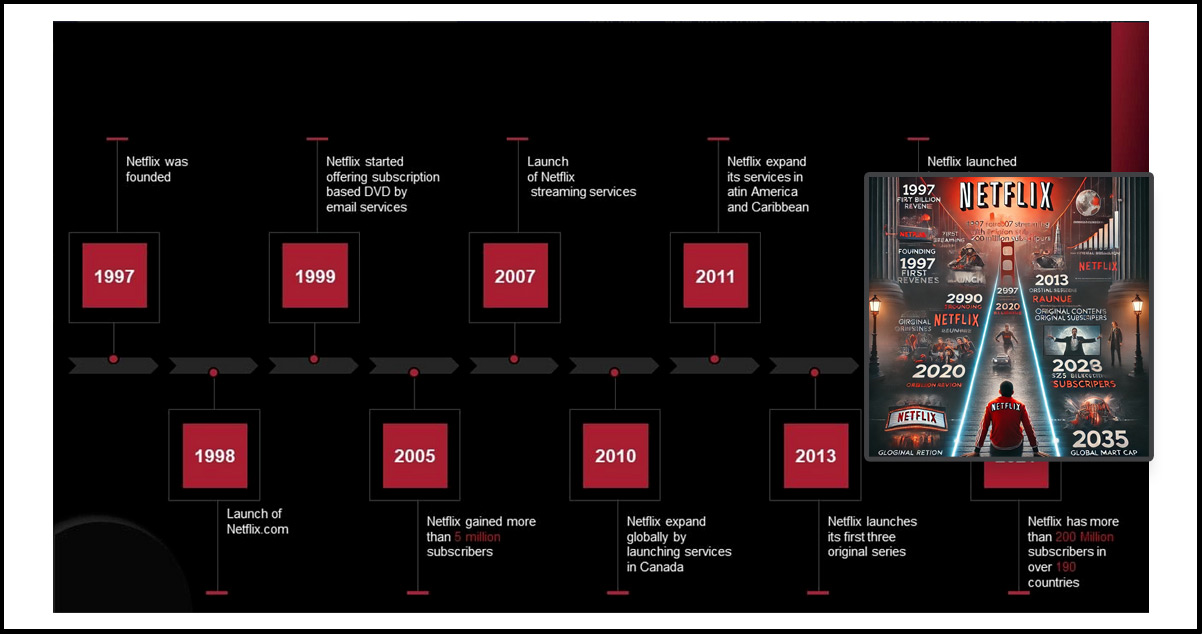
We tracked changes in average ratings over the past five years to analyze how viewer preferences have evolved. The following line graph shows these trends:
Graph 1: Historical Average Viewer Ratings Over Five Years
Analysis
- A gradual increase in average ratings suggests improving content quality over time.
- Notably, significant spikes correspond to the release of blockbuster titles or popular series, indicating their impact on overall viewer satisfaction.
Key Points
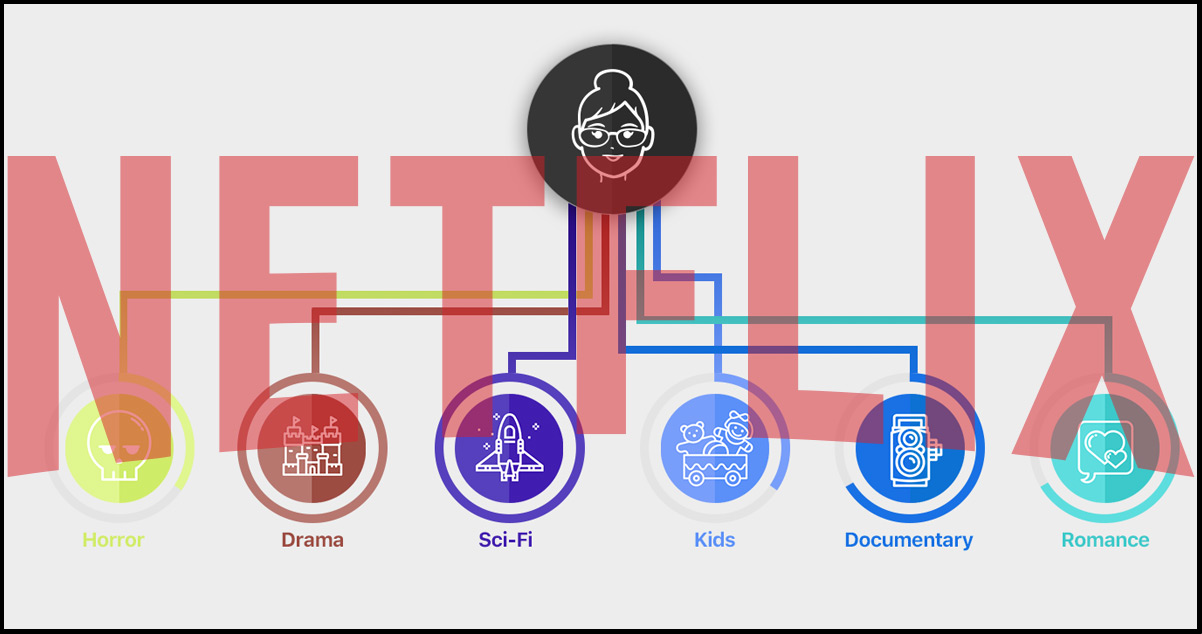
1. Genre Preferences: Drama remains the most favored genre, followed by comedy and action. This insight can guide content creators in developing future projects.
2. Influence of Cast and Directors: Established talents significantly impact viewer choices, emphasizing the importance of star power in attracting audiences.
3. Seasonal Trends: Viewer preferences vary by season, with summer favoring action and winter leaning towards drama and romance. This knowledge can enhance release strategies.
4. Competitive Landscape: Understanding how Netflix's viewer preferences compare to other platforms can inform strategic decisions and content diversification.
5. Historical Improvements: The gradual increase in average ratings indicates a positive trend in content quality, driven by strategic investments and viewer feedback.
Implications for Stakeholders

The findings of this report can help content creators, marketers, and stakeholders in the entertainment industry to tailor their strategies effectively. By leveraging viewer preferences, they can enhance viewer engagement, optimize content offerings, and drive growth in the competitive streaming landscape. For instance, using techniques to scrape Netflix series streaming data can provide valuable insights into popular shows and genres.
Future Research Directions

Future research could explore more profound aspects of viewer preferences, such as the impact of marketing strategies on viewership, demographic influences on content choices, and the role of social media in shaping viewer trends. Additionally, employing advanced analytics and machine learning techniques, including approaches to scrape Netflix data API, could yield even more precise insights into viewer behavior and preferences. Moreover, utilizing Netflix API scraping methods can enhance the accuracy of data collection, allowing for a more in-depth analysis of audience engagement.
Conclusion
This research report emphasizes the valuable insights gained from conducting Netflix data extraction to uncover viewer preferences in movies and series. The study offers a thorough understanding of viewer behavior by analyzing various factors, such as genres, cast influence, seasonal trends, and comparative performance across different platforms. The findings indicate that genre popularity fluctuates based on seasonal content and marketing strategies, while the presence of famous actors significantly impacts viewership numbers. Moreover, trends in viewer preferences reveal opportunities for content creators to tailor their offerings effectively. Extracting Netflix API data allows stakeholders to make data-driven decisions that enhance audience engagement and retention. Overall, this report is a crucial resource for content developers and marketers looking to optimize their strategies in an increasingly competitive streaming landscape. Scrape Netflix Streaming Data to improve viewer satisfaction and sustained growth for streaming services.
Embrace the potential of OTT Scrape to unlock these insights and stay ahead in the competitive world of streaming!
